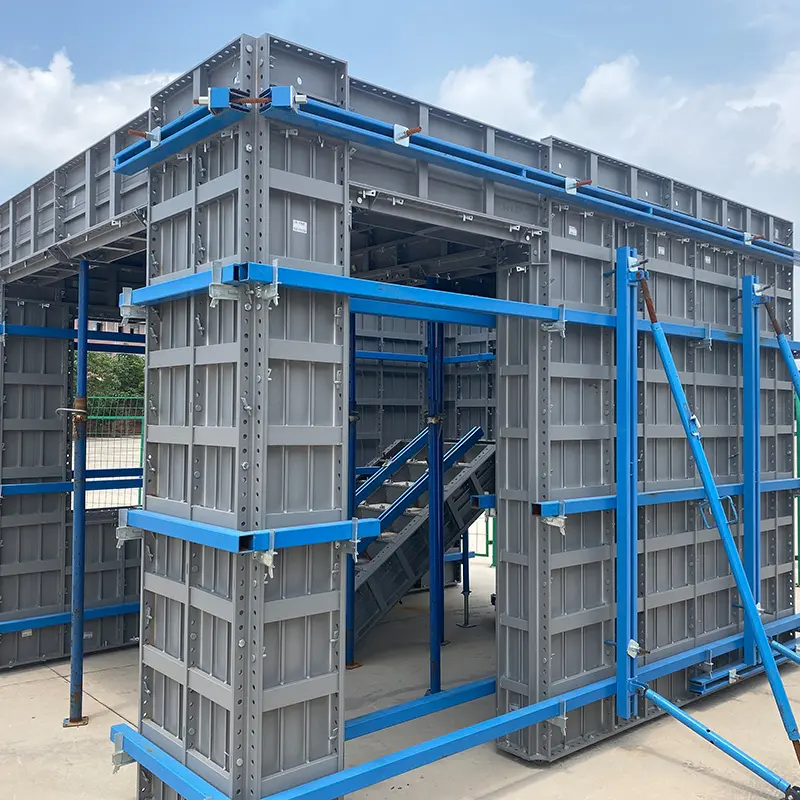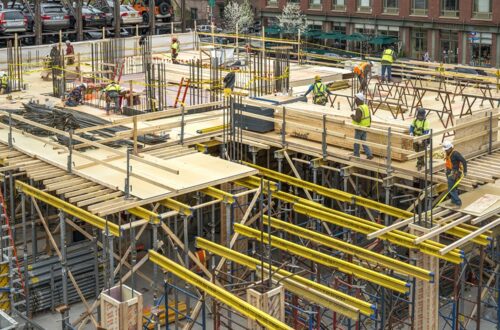Laminated Veneer Lumber (LVL) formwork is a widely used construction technique that offers numerous advantages over traditional formwork systems. As technology continues to evolve, the future of LVL formwork holds even more exciting innovations that will revolutionize the construction industry. In this article, we will delve into the current state of LVL formwork technology, anticipate future advancements, discuss the challenges and opportunities in innovation, and explore how professionals can prepare for these changes.
Understanding LVL Formwork
The Basics of LVL Formwork
LVL formwork involves the use of sheets of laminated veneer lumber for creating temporary molds for concrete structures. These molds provide support and shape to the concrete during the curing process. LVL formwork is lightweight, durable, and customizable, making it a popular choice among construction professionals.
When it comes to LVL formwork, the sheets are typically manufactured by bonding thin wood veneers together with adhesives under high pressure and heat. This process results in a strong and dimensionally stable material that is ideal for withstanding the pressures exerted by wet concrete. The smooth surface of LVL also allows for easy stripping after the concrete has set, saving time and effort during the formwork removal process.
Key Benefits of Using LVL Formwork
One of the main advantages of LVL formwork is its strength-to-weight ratio. LVL is capable of withstanding significant loads while being much lighter compared to traditional formwork materials. Additionally, LVL formwork is resistant to warping and can be easily cut into various shapes to suit different construction requirements. Its reusability and sustainability also contribute to its appeal as an environmentally friendly construction method.
Moreover, LVL formwork offers excellent dimensional stability, ensuring that the concrete retains the intended shape and finish. This is crucial for achieving precise architectural designs and ensuring structural integrity. The versatility of LVL formwork extends to its compatibility with various formwork systems, allowing for seamless integration into different construction projects with ease.

Current State of LVL Formwork Technology
Existing Techniques and Their Limitations
While LVL formwork has proven to be advantageous, it is important to acknowledge its current limitations. One such limitation is the lack of automation in the formwork setup process. Construction professionals often spend considerable time and effort manually assembling and disassembling the formwork. This manual labor can lead to increased costs and potential safety risks. Learn more about potential safety risks click here.
Another challenge faced by traditional LVL formwork systems is the issue of adaptability to complex architectural designs. Conventional formwork may struggle to conform to intricate shapes and curves, requiring custom modifications and additional support structures. This lack of flexibility can hinder the construction process and result in delays.
Recent Developments in LVL Formwork
Fortunately, recent developments have aimed to address these limitations. Innovations such as self-locking LVL panels and quick-release mechanisms have made the formwork setup process more efficient and secure. These advancements not only save time and labor costs but also improve overall project productivity.
Furthermore, advancements in material technology have led to the development of lightweight yet durable LVL formwork components. These new materials offer increased strength-to-weight ratios, allowing for easier handling and transportation on construction sites. Additionally, the use of eco-friendly and sustainable materials in LVL formwork production aligns with the industry’s growing emphasis on environmental responsibility. Learn more about Training and Skills Development for Working with LVL Formwork click https://northcarolinacondoliving.com/training-and-skills-development-for-working-with-lvl-formwork/
Anticipating Future Innovations
Predicted Technological Advancements
As technology continues to advance, we can expect further innovations in LVL formwork. One possibility is the integration of robotic systems to automate the formwork setup and removal process. These robots can be programmed to precisely position, secure, and remove the LVL panels, reducing the reliance on manual labor and improving construction efficiency.
Another exciting development on the horizon is the potential use of advanced sensors in LVL formwork. These sensors could be embedded within the panels to monitor various parameters such as load distribution, temperature, and structural integrity in real-time. This data could then be analyzed to optimize construction processes and ensure the safety and durability of the structures. Learn more about use of advanced sensors in LVL formwork visit at https://www.researchgate.net/publication/326222397_A_Review_of_Some_Advanced_Sensors_used_for_Health_Diagnosis_of_Civil_Engineering_Structures.

Potential Impact on the Construction Industry
The introduction of automated LVL formwork systems would have a significant impact on the construction industry. It would streamline the construction process, minimize human error, and increase overall productivity. Additionally, the reduced reliance on manual labor would alleviate strain on the workforce, creating opportunities for upskilling and specialization.
Furthermore, the integration of advanced sensors in LVL formwork could revolutionize quality control in construction projects. By providing real-time data on structural performance and environmental conditions, these sensors could enable proactive maintenance and early detection of potential issues, ultimately leading to safer and more resilient structures.
Challenges and Opportunities in LVL Formwork Innovation
Overcoming Obstacles in Implementing New Technologies
While the future of LVL formwork appears promising, there are challenges that need to be addressed. One such challenge is the initial cost associated with integrating automated systems. However, the long-term benefits of increased efficiency and reduced labor expenses make it a worthwhile investment for construction companies.
Another obstacle that companies may face when implementing new technologies in LVL formwork is the need for specialized training for their workforce. Transitioning to automated systems and digital platforms requires employees to acquire new skills and adapt to different work processes. Companies must invest in training programs to ensure that their staff can effectively utilize the new technologies and maximize their benefits.
Harnessing Opportunities for Growth and Improvement
The opportunities presented by LVL formwork innovation should not be overlooked. Construction companies that embrace new technologies and adapt their business strategies accordingly will be at the forefront of the industry. They will not only benefit from increased productivity but also gain a competitive edge in winning projects that require fast and efficient construction methods.
Furthermore, the integration of Building Information Modeling (BIM) software with LVL formwork systems opens up new possibilities for enhanced project planning and execution. BIM allows for the creation of detailed 3D models that provide a comprehensive view of the construction process, enabling better coordination among different teams and reducing the likelihood of errors or rework. By leveraging BIM technology in conjunction with LVL formwork innovation, construction companies can streamline their operations and deliver projects with greater precision and speed.
Preparing for the Future of LVL Formwork
Skills and Knowledge for Tomorrow’s Construction Professionals
As LVL formwork technology advances, construction professionals need to equip themselves with the skills and knowledge required to operate and maintain automated systems. It is crucial to stay updated with the latest developments in the field, attend training programs, and collaborate with industry experts to stay ahead of the curve.
With the rapid evolution of LVL formwork technology, construction professionals must also familiarize themselves with sustainable construction practices. Understanding how to incorporate eco-friendly materials and methods into formwork processes can not only benefit the environment but also enhance project efficiency and appeal to environmentally conscious clients.
Adapting Business Strategies to Embrace Innovation
Construction companies should also consider reevaluating their business strategies to incorporate LVL formwork innovation. This might involve investing in research and development, partnering with technology providers, and fostering a culture of innovation within the organization. Embracing change will position them for success in an industry that constantly evolves.
Furthermore, integrating Building Information Modeling (BIM) into LVL formwork processes can streamline project coordination and improve communication among stakeholders. By leveraging BIM technology, construction professionals can visualize the entire construction process, identify potential clashes or issues, and optimize formwork design and placement for enhanced project outcomes.In conclusion, the future of LVL formwork holds tremendous potential for innovation. Construction professionals can expect the integration of robotic systems, increased automation, and improved efficiency in the setup and removal of formwork. While challenges exist, companies that embrace these innovations and adapt their strategies accordingly will thrive in the fast-paced construction industry. By staying informed, upskilling, and fostering a culture of innovation, professionals can prepare themselves for a future where LVL formwork plays a pivotal role in shaping the built environment.






